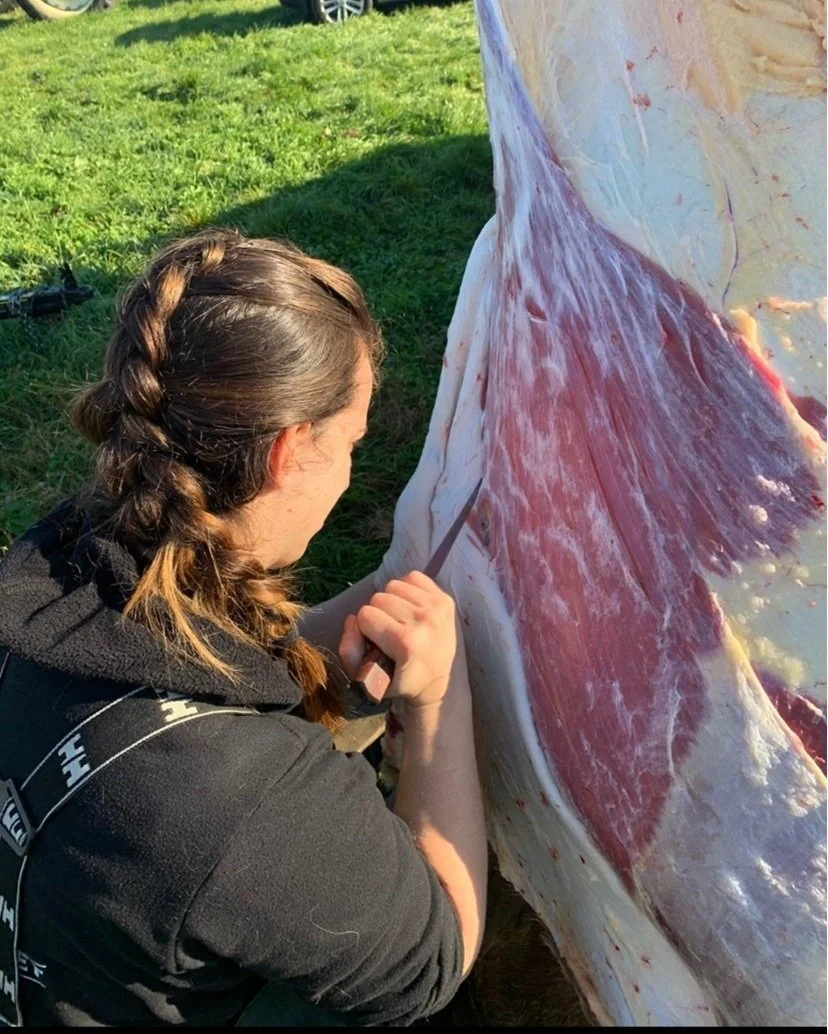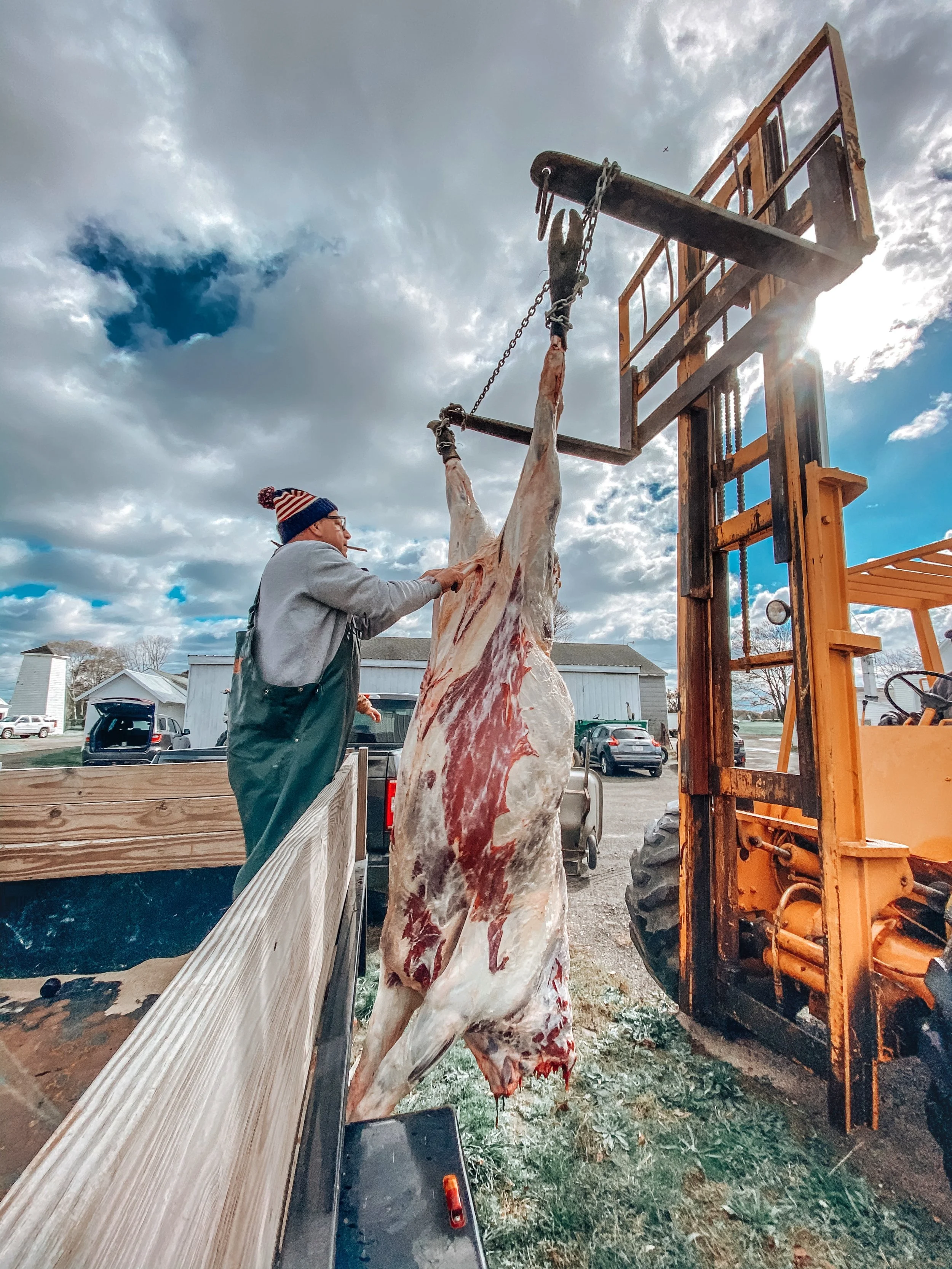What’s the Meat-ing of these Tariffs?
Hi Family!
Grocery shopping is annoying and stressful enough without incorporating an infuriating hostile political environment. We’re here to shed some light on what the heck it all means. What do international beef tariffs have anything to do for the American meat markets? What’s our bottom line? Is the cost of my delicious special blended burger going to go up?
Let’s dive into it.
Why Are We Importing Beef?
We’ve written about the importing of beef and chicken into the United States before. The United States is the largest producer of meat and ironically we are the second largest importer of meat. We import beef mostly for ground beef products due to the growing fast food markets then chicken. Due to an increase of bi-products we cut deals several years ago to trade with some partnering countries to cut costs which benefit all.
Something I did NOT know that I learned by reading a few articles from the USDA is that due to the fattier nature of US raised grain-fed cattle we export the largest amounts of beef to countries who then in turn import their leaner grass-fed/finished product, (Brower, 2022). A fair trade in all meanings of the words. If you click on the article the product is supposed to be vetted and tested as if it were raised on US soil, which makes me happier than a couple of years ago. Still, it’s worth raising the question, why? The simple answer is because in order to lean out our fat-forward ground-beef product it requires a leaner substitute. I find it to be ironic that most people still love grain-fed beef but the grass fed/grass finished market is being forced down our throats. I digress and leave that conversation to another day. I recommend reading a great book “Sacred Cow” by Diana Rodgers.
What’s the meat-ing of this?
What many people don’t realize is that our US meat and US agriculture is like crude oil, the world runs on the market whether we like the idea of it or not. Humans have been betting on the pricing of cattle stock per head much longer than we have been on the stock market (pun intended). The US economy relies heavily on our agricultural exports. $412 billion is no small potatoes, this is a significant market we’re talking about for US economic stimulation. According to a study the USDA conducted “In 2022, U.S. agricultural exports valued at $197.4 billion had generated an additional $214.6 billion in economic activity, for a total of $412.0 billion in economic output. This means that, on average, every $1.00 of U.S. agricultural products exported generated a total of $2.09 of domestic economic activity. The services, trade, and transportation sector benefited the most from agricultural exports, generating an estimated $73.6 billion worth of additional economic activity. On the farm, agricultural exports supported an additional $70.4 billion of business activity beyond the value of the agricultural exports themselves.”
That same data states not only is agriculture one of the foundations of our economic stability in the US but it creates over 1.25 million jobs, amounting to 6,338 jobs for every $1 billion of agricultural goods exported.
What’s the bottom line?
”How does it affect my bottom line Isabella?” Meat retrospectively shouldn’t be affected by these new rounds of tariffs. However, we have seen the price of ground beef increase substantially in the last 8 years from $3.55/lb to around $5.60/lb. These numbers are a little skewed in my personal opinion because the data set excludes beef round, chuck, and sirloin which are the main components of a fantastic chop meat or ground beef. I found this article that is a bit biased and catered towards fear mongering but is an interesting viewpoint nonetheless. I went as far as to reach the USDA article it sources in regards to the cattle and beef herd decrease. These numbers are alarming but I happen to know most of those decreases are due to COVID-19 and the processors that had to lay-off a ton of their employees. Then we had surplus of beef and no one to butcher the product so many processors went with larger auto-processing machines. Some companies were bought out by international companies. Many things happened under our noses while we were busy navigating life everyday during a pandemic. Luckily Brazil already pays a considerable 24.6% on their beef imports into the United States. Brazil exported a whopping $1.4 billion to the United States last year. Making Brazil the largest importer and exporter (second to the US) of beef. We really shouldn’t see increases in the beef market aside from consumer consumption and overall higher demand for decent meat which ultimately drives the market.
One of the main things that will be effected is vegan beyond beef, which is a Canadian company. Just some food for thought that we’ll leave you with.
Australia on the other hand has been singled out (if you haven’t already heard). As we go into the Easter/Spring season Australian and New Zealand lamb pricing should be interesting. The market hasn’t gotten there yet because we’re still thick in the mud of winter but once it comes up for air consumer purchasing will likely drive American lamb prices through the roof. Generally with meat like Austrailian product whenever we see a challenge with the market it drives local American beef higher from simply a higher demand perspective. Australian tariffs were raised in alignment with the recent global 10% tariff raise. So were Brazil and Argentinian beef tariffs; all is fair in love, trade deals, and beef. Australia was singled out, however; the other day in a comical Trump speech. Australia placed a strict ban importing United States bovine (beef) in 2003 after the mad cow disease floated through herds. As stated by President Trump “…we imported $3 billion of Australian beef from them (Australia) just last year alone. They won’t take any of our beef. They don’t want it because they don’t want it to affect their farmers and, you know, I don’t blame them, but we’re doing the same thing right now…”.
For the Australian ranchers and processors they’re just going to outsource the cost to American fast food (and ground beef bulk packaging, like Costco) consumers. It’s unfortunate in the intermediary but ultimately we need to keep this product homegrown. There’s really no need for Americans to be outsourcing it’s meat. Particularly with the “grass-fed grass-finished” crowds. We’ve been saying this for a while that most of the suppliers are spouting BS and getting away with a subpar product they’re packaging as “healthier”. It’s in alignment with the organic movement. If a tomato is organic but is still sprayed and put on a boat from Mexico by the time it gets to New York it’s a month old. By the time it gets to the center of the US it’s months old, YUCK. I’ll take a regular home-grown tomato that I grow and freeze them instead and wait for the fresh cherry tomato’s until they’re in season, thank you.
The challenge with all of this in general is we’re outsourcing a product that should simply be grown at home. Historically, we had small community butchers and farmers catering to the local people of their community. Now, we see a great direct consumer market but with that people are also vastly removed from their food process. People simply have no idea how much work it takes to put a steak on our plate. I’ve seen it in the store we have a growing base of clientele that has a deep desire to get back to their home-grown local roots of food. What we’re eating and how it’s being raised. We’ve seen the biggest decrease in United States ranching and farming as a whole some would even consider it to be a “crisis”.
At this point if you’ve read any of my other articles I’ll begin to sound like a broken record. As consumers it’s OUR job to know where our food comes from. The country of origin is astoundingly important and by law every piece of meat has to have a stamp of COO and kill date/processing date. If you’re going to eat meat do it responsibly I encourage everyone to be informed and to read the labels especially if you’re purchasing meat from big box stores i.e. BJs, Sams, Costco.
In regards to chicken breast, the price of the market has nearly doubled which is quite alarming for consumers considering most meat eaters eat chicken. From $2.95/lb to $4.95/lb at it’s high during COVID-19. My issue with this data is that it’s not taking into consideration the theme of meat-markets and what they do to one another. They drive one another like any other market. So, for example, if chicken
Our Family’s Solution
If you’re new here there’s a couple of things you’ll learn about us.
1) We don’t eat (or sell) imported meat. EVER. PERIOD. Don’t even bring it up. Yes, you will pay a premium for our product but it is American product that we
2) Ever piece of meat we serve is fresh beef that has our stamp of approval on it. Every single time.
This reason alone is why we have so many new families coming to us asking about our new meat share that we just recently opened. If you find meat is one of the most expensive items you’re purchasing it should be, it’s a nutritional powerhouse, but I simply encourage people to ask more questions. Get curious. Talk to your local farmers and your local butchers. Begin a dialogue so they understand what you’re looking for. Vet them and figure out what matters to you and be very clear about what it is you’re looking for. Buying in bulk over time is the most affordable if you have the space. It’s simply going back to the basics of our American roots.
Our meat share pre-order just opened. We don’t know how many times we’ll be able to do this this year but beef is extremely limited and we’re offering a high end boutique butchering service catered to your famiy’s request. We’ll be bringing in a fresh steer that’s locally raised by a great small ranching family. We’ll be picking the steer out ourselves and selling in bulk packaging labeled with cooking instructions catered to your preferences. This is something we’re very excited about and it’s something that we’ve been working on for the last 5 years! The meat is completely tailored to your family so the cuts are flexible the amount is flexible and everything is catered to your specifications all you have to do is enjoy your all American fresh as fresh can get beef. Email us and we’ll send you a cut sheet.





